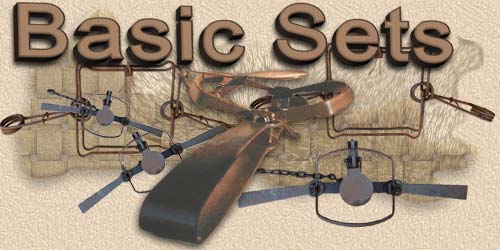| Castor mounds are used by beavers to mark their territory. Beavers
are very territorial and will keep these mounds as sentinals telling all
passing beavers that this area is inhabited and to stay out. Beavers
will dive to the bottom and bring up water soaked leaves, mud and debris
and place it on the bank, usually within two feet of the shoreline.
It then deposits a secretion from its castors on this pile of debris to
mark the mound. These castor mounds come in different sizes depending
on how long the beavers have been using the mound.
Castor mound - x marks approach being used to the mound
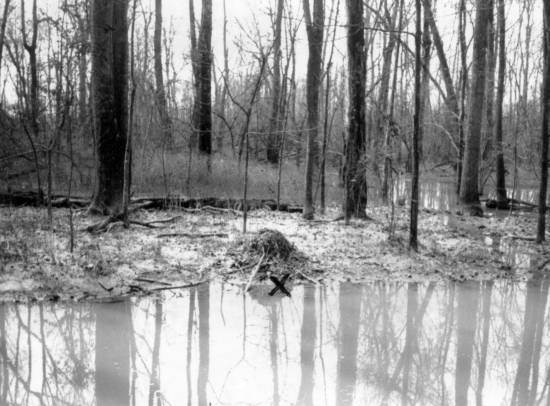
Castor mounds should not be confused with scent mounds. What I
call scent mounds are what look like miniature castor mounds, but usually
there are a number of them side by side. These are markers made by
the beavers in the late winter or early spring to attract mates.
You don't want to set these like castor mounds because the beavers don't
react to them like they do to the territorial markers.
This is shows what scent mounds look like
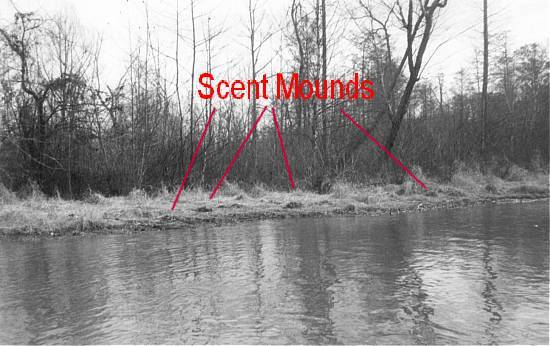
When the beaver makes a castor mound, or applies more debris to a castor
mound, it dives to the bottom, gathers the material for the mound, holds
the material in both front paws against its chest and goes to the castor
mound. When the beaver's chin or chest makes contact with the approachway,
it will put its rear feet down and make a powerful lunge to get the rest
of its body into shallower water. It then puts its tail on the bottom for
stability and on its hind feet it waddles up the bank to deposit the debris
on the mound. The key here is that it doesn't usually use its front
feet to help it climb up the bank. The trap should be set for the
back foot and be positioned where the beaver's hind foot will make contact
on its approach.
Drawing of castor mound on steep approach
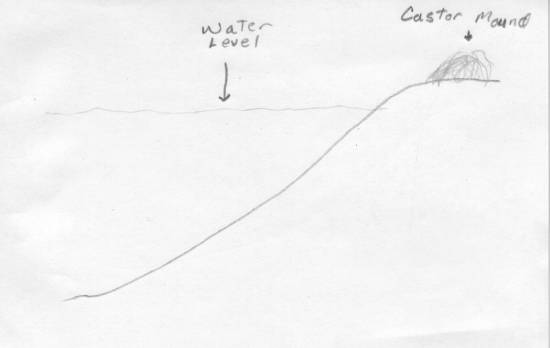
A trap bed needs to be made for the trap. Since the beaver will
put its tail down and because the beaver will contact the bank with its
body before putting down its back feet, the trap should be in a trap bed
that is made as a depression in the bottom. The trap should actually
be in a hole so that the beaver needs to step down into the hole.
This will help avoid empty fired traps.
Drawing of trap in the trap bed and connected to a drowning rig
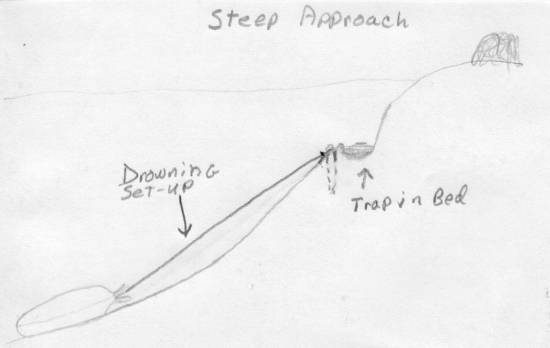
The distance from the bank to where the trap is bedded is dependent
upon the contour of the bank. If it's a steep contoured bank, the
trap will be set deep, but not far out from the bank. In the event
of a shallow approach, the trap will be in shallower water, but farther
from the bank. This trap placement is something that comes easier
with experience. A rule of thumb is to measure from where you expect
the beaver to make contact with the bank, using the distance from your
hand to your elbow to the trap. This distance will be more down than
out in a steep bank situation, and the opposite in a shallow bank situation.
Shallow approach to a castor mound
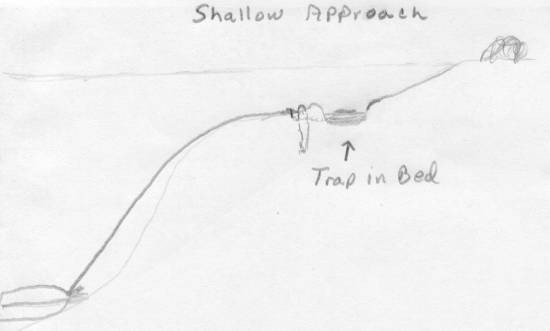
Because the beaver is wide and its feet are offset from the center of
its body, the trap needs to be set to one side or the other of the approach
to the castor mound.
Front view of castor mound set
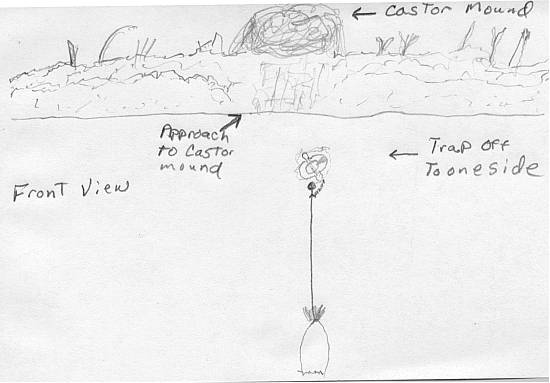
Because the hind foot of the beaver is very large, the larger seven
and a half inch jaw spread traps, such as the #5, get a better hold on
that large foot. Check your laws though, because there are some states
where the larger traps are not legal to set. Use the largest foothold
trap that is legal in your area.
Use a castor base lure on the mound and the beaver will come to the
mound to cover up the beaver castor odor you placed on the mound, and replace
it with his own castor smell to let the suspected intruder know this is
his territory and to stay out.
Animals normally used for:
Beaver - This set is very effective in the fall through spring.
Email Us
All Rights Reserved
All articles and Info @ this site are copywrited
All Images copywrited© by BennyMade
|
